The wilderness can seem scary if you don’t know all of your facts. We’re here to debunk common wilderness and backpacking myths. Keep reading and get the scoop!
Myth #1: You vs. Nature: The wilderness is all about survival.
If you choose to go into the wilderness with nothing but the clothes on your back, you will need to carry a survival mindset to find food, shelter and water to stay alive. Most of us go to the wilderness for other reasons, though: adventure, tranquility, to work our bodies, camaraderie, to observe wildlife and to enjoy the natural world.
Before you go, learn how to set up your shelter and use your stove and water purification system. Those are your survival tools. And then relax as you tune in to nature’s rhythms and rules. There’s no need to conquer anything. As more of us spend time in wild places, they seem more and more tame. Learn the techniques of Leave No Trace in order to work with Mother Nature rather than against her.
Myth #2: With a GPS, there’s no need for a compass.
Ah, technology! It’s great when it works. A GPS may be the perfect tool in the backcountry, but beware. Will you be able to navigate if it’s not working?
If your device loses its charge, or isn’t functioning, it’s wise to have a back-up. Know how to read a map, and carry a good one with you, along with a compass. Know how to orient the map, and to read topography. You can learn these skills on an Outward Bound course or from a local outfitter that offers courses. They are essential skills of self-reliance and living safely in the wild.
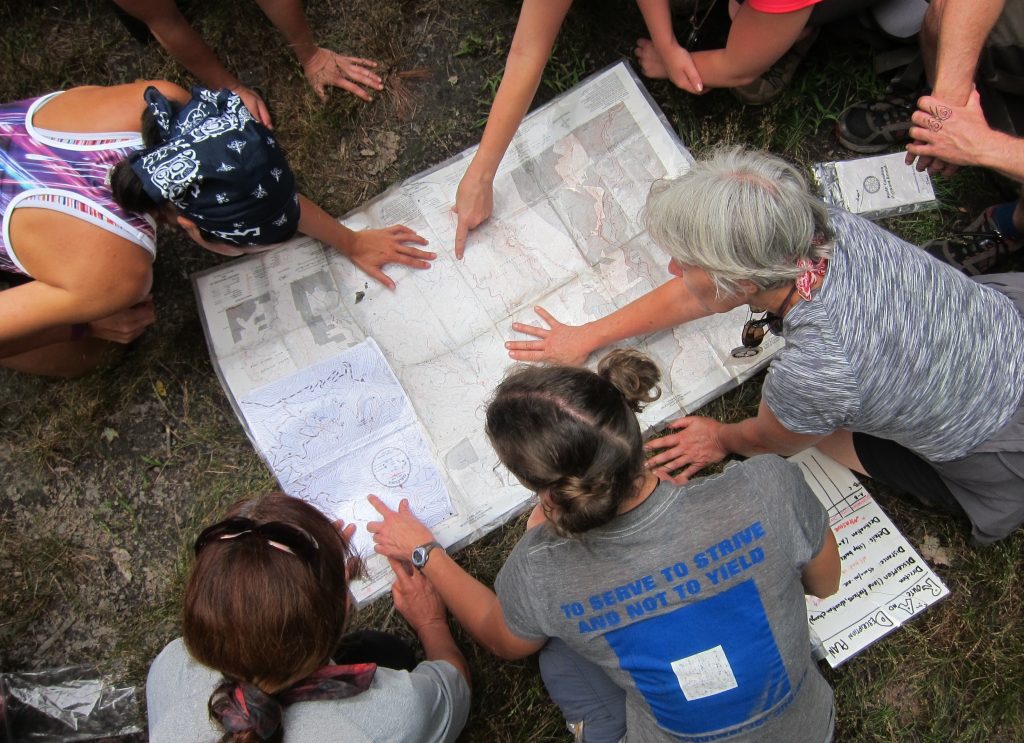
Learn how to read and orient a map, and how to read topography before venturing into the wilderness.
Myth #3: Carrying a first aid kit makes you safe.
Many items in a first aid kit can be improvised, but what’s essential with first aid is knowledge. Two of the most common injuries when backpacking are cuts and burns. Would you know what to do if your backpacking buddy cut herself or himself and was bleeding badly? Or what if someone in your group spilled boiling water on their foot, or picked up something hot and got burned? On Ouward Bound courses students learn how to prevent common injuries and also what to do if these things happen. Knowing what can happen raises awareness and leads to greater likelihood of prevention.
One item that can’t be improvised is epinephrine, which is used to treat allergic reactions. If someone in your party has a history of severe allergic reactions to bee stings or a food allergy, it’s essential to keep epinephrine handy at all times.
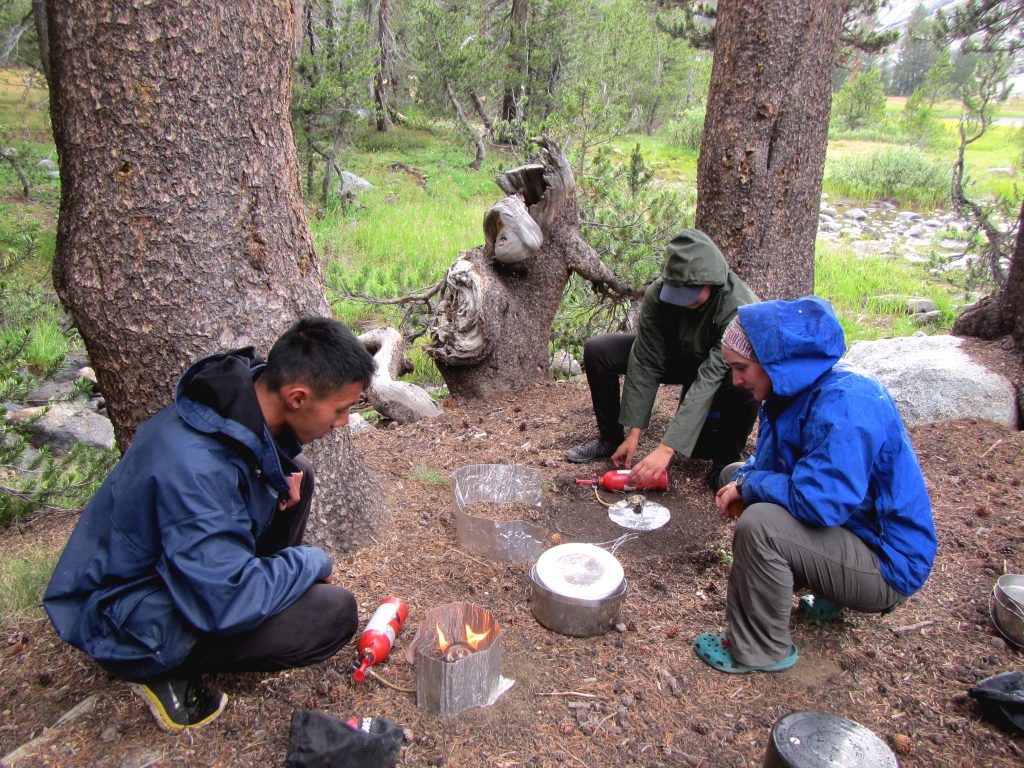
Outward Bound Instructor is shown teaching her students cooking and safety techniques before preparing dinner for the crew.
Myth #4: It’s okay to use biodegradable soap in creeks.
How would you feel if someone put soap in your drinking water or chemicals in the water you lived in? For all of the aquatic organisms that live in a clean stream, any kind of soap is harmful. Biodegradable soap will not last as long but will still have harmful effects on life in a stream.
Instead of putting soap in the water, go about 200 feet from any stream or river to clean pots, bathe or rinse out clothes. Carry water from the stream and use small amounts of biodegradable soap. All of the little aquatic creatures will appreciate it!
Myth #5: Hypothermia only happens when it’s cold or in winter.
Hypothermia is sneaky! Sure, it can happen when temperatures dip well below freezing. But did you know that on a 70 degree day in summer, people get hypothermia? Say you’re on a long hike, and are pretty depleted of calories. Maybe you’re dehydrated too. It’s late afternoon and cloudy, it’s been drizzling all day and the wind picks up. Then you stop to rest. You’re too tired to get out layers, or to dig out food or a stove to make something hot. Yet those are exactly the things you should do. Your core temperature starts to drop. You have hypothermia.
Hypothermia lurks more closely when it’s cold out, for sure. But it can also strike in moderate weather. Be prepared by keeping snacks, layers and rain gear handy, and stay well hydrated. If your hiking buddy starts to shiver, they’re showing signs of early hypothermia, and judgment can decrease from there. So stop and take the time to eat snacks or drink something hot, put on a hat and layers, and get moving to generate heat. When you get to camp, change into dry clothes and you’ll have a much easier time keeping warm. Hypothermia can catch hikers off guard. Hypothermia can kill. And it can be prevented.
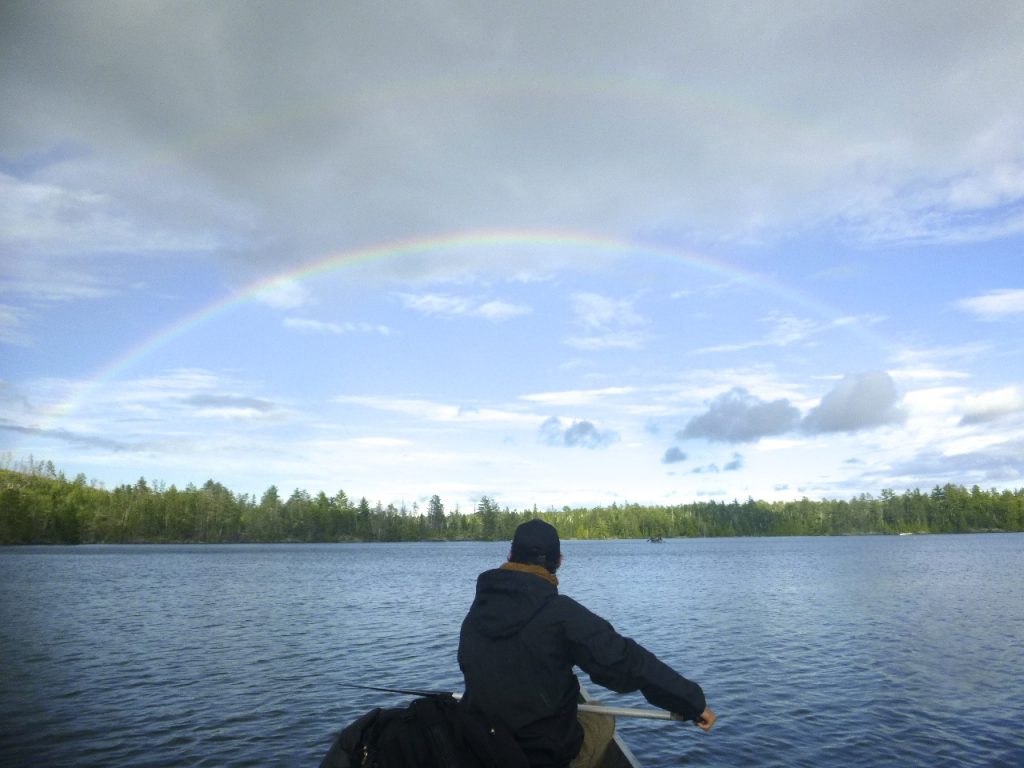
Hypothermia can strike in moderate weather. Be prepared by keeping snacks, layers and rain gear handy, and stay well hydrated.
Myth #6: Drink up! Water is clean and pure in the wilderness.
It used to be that people could drink water straight from a stream or lake and the water was pure and clean. That’s no longer true. Giardia, a microscopic parasite that causes illness from contaminated food and water, and other microorganisms now inhabit most waterways, small and large, and there’s no way to know if a source is contaminated. So before you drink up, treat your water!
There are many options for treating water, from filters to chemical tablets to UV light. Do some research and choose the method that makes the most sense for your trip.
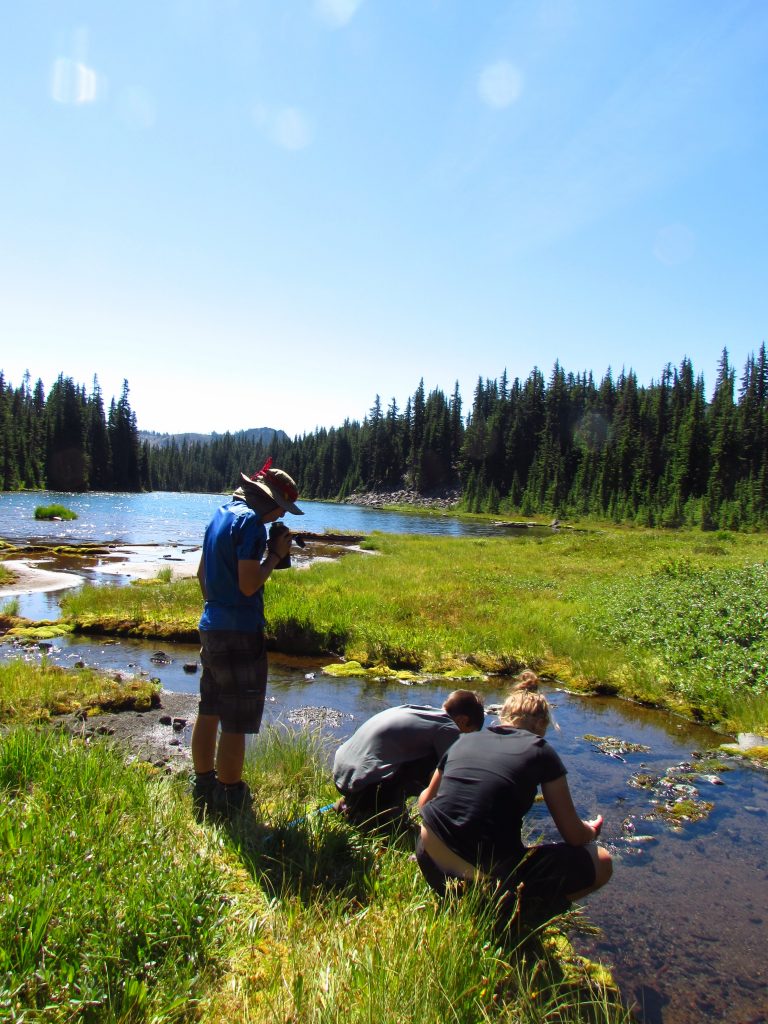
Photo taken on an Oregon Rafting & Mountaineering expedition.
Myth #7: The easiest distance between two points is a straight line.
In a car, this may be true! But in the mountains there are more factors than distance. Often it’s easiest to follow a ridge. Ridges allow us to see what’s around us, and often offer easier walking than the side of a hill. Terrain, such as cliffs, as well as vegetation (hillsides of rhododendron, for example) can make the “straight line” impossible.
Another example of not following a straight line is switchbacks. These zig zags in a trail are there for a reason, whether determined by terrain, to lessen erosion or to make a trail more reasonable for hiking. Always follow switchbacks. Not only are they easier on your body, but they help prevent erosion. Cutting shortcuts is harmful to the trail, so resist the temptation.
Myth #8: It’s okay to leave food scraps to compost.
Did you know that in most environments orange peels take at least six months to decompose? In dry places, it can take years. Leave No Trace guidelines remind us to carry out our food waste. In addition to taking time to decompose, food scraps also attract animals, from mice to bears to ants.
Yes, animals and bugs all have to eat, it’s true. But they get their best food from nature, not humans. Leaving food around, especially in popular areas, can change the natural habits of animals. It’s best to let them find their own food, and for you to carry out any scraps you produce. This includes hanging food at night if bears live in the area.
Myth #9: More camping gear is better.
If you love to carry a really heavy pack, it’s great to bring a lot of stuff. But most of us would rather carry a lighter load, so it’s important to pack just what you need to be safe and comfortable. There are LOTS of gadgets available in outfitter stores; they are best used when car camping.
One of the best things about going light when backpacking is to realize how little we need in order to be comfortable in the wild. Well chosen clothing and gear paired with knowledge of campcraft, navigation and safety allows you to travel well. When you get home, you may find that you don’t need a lot of stuff to be content in life. This can be one of the greatest lessons of being out on the trail. Self-reliance and simplicity offer sincere satisfaction.
Myth #10: The best cooking is over a campfire.
It’s a romantic idea, cooking over a campfire. And in the right conditions, you might find that food cooked that way tastes the best. But there’s a reality to cooking over a fire. Building a campfire is an art and it takes time. If wood is wet, you may find it very hard to get a good fire going. See our blog post on building a campfire for more information. In popular areas, there may not be enough dead and down wood to make a good fire and keep it going long enough to cook a meal. In situations where it’s windy and super dry, building a fire can be a hazard. Enormous wildfires have been started by campers innocently building a fire at their campsite.
While you may enjoy cooking over a fire, consider the fact that today’s backpacking stoves are light, easy to use and quick. In some fragile areas, they are required.
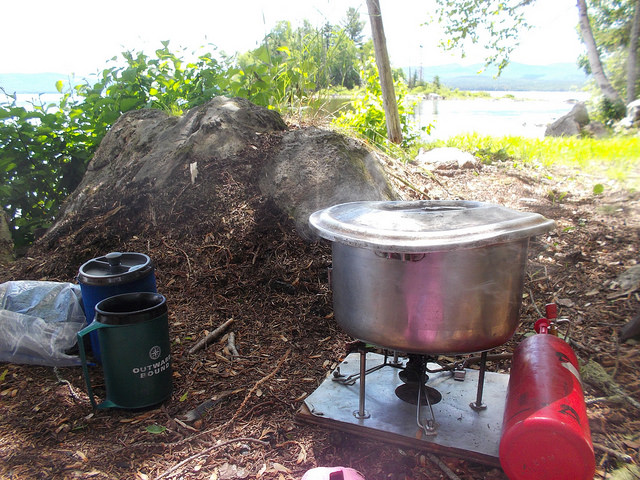
Photo taken on a backpacking expedition in Maine.
Myth #11: Blue jeans are the perfect rugged wear for backpacking.
Jeans may be rugged, but they are far from the ideal for backpacking. Jeans are made of cotton and can absorb a lot of water. (That’s why towels are made of it!) In environments where it rains, you’ll be warmer and more comfortable in quick-drying nylon pants. In cold climates, heavier non-cotton pants work well, or you can put long johns under your light weight pants for a combination that cuts wind and keeps you warm.
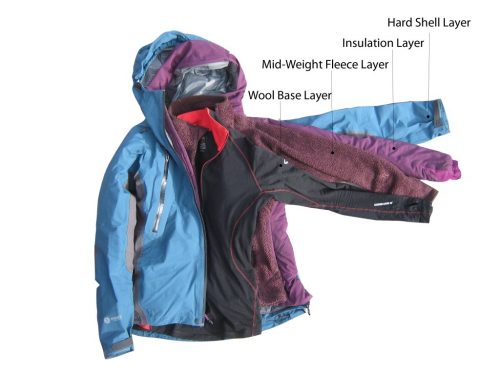
Pictured are recommended layers for an expedition in the wilderness, especially in colder climates.
There you have it, wilderness and backpacking myths are explained. It’s always best to be prepared for a wilderness expedition, so be sure to do your research before embarking on your next adventure.
About the Author
CJ Wilson is a former Outward Bound Instructor whose love of mountaineering has taken her from the western US to the Andes of Colombia, Ecuador, Peru and Bolivia.
OTHER POSTS YOU MAY LIKE
Read More
Read More
Read More




